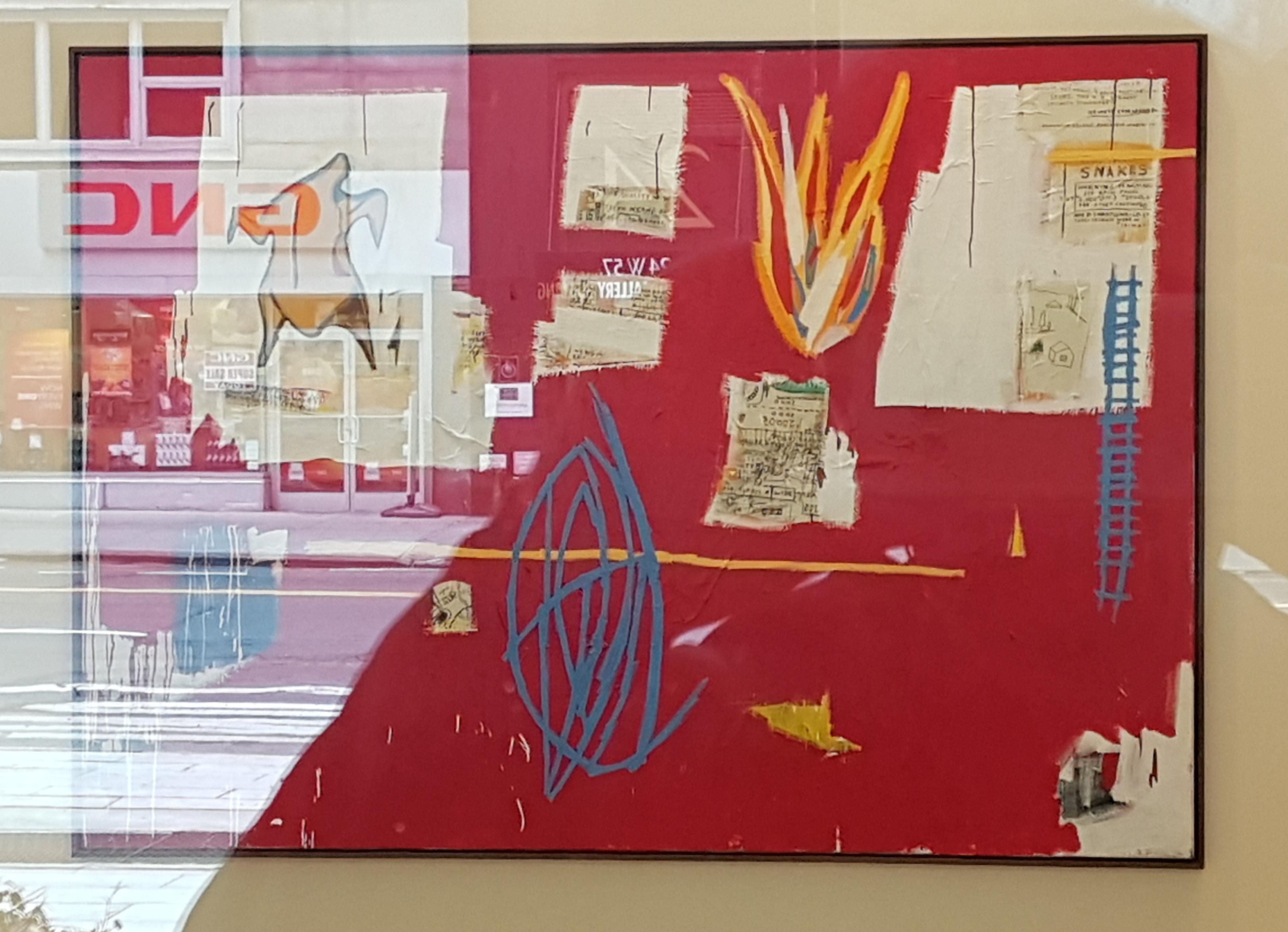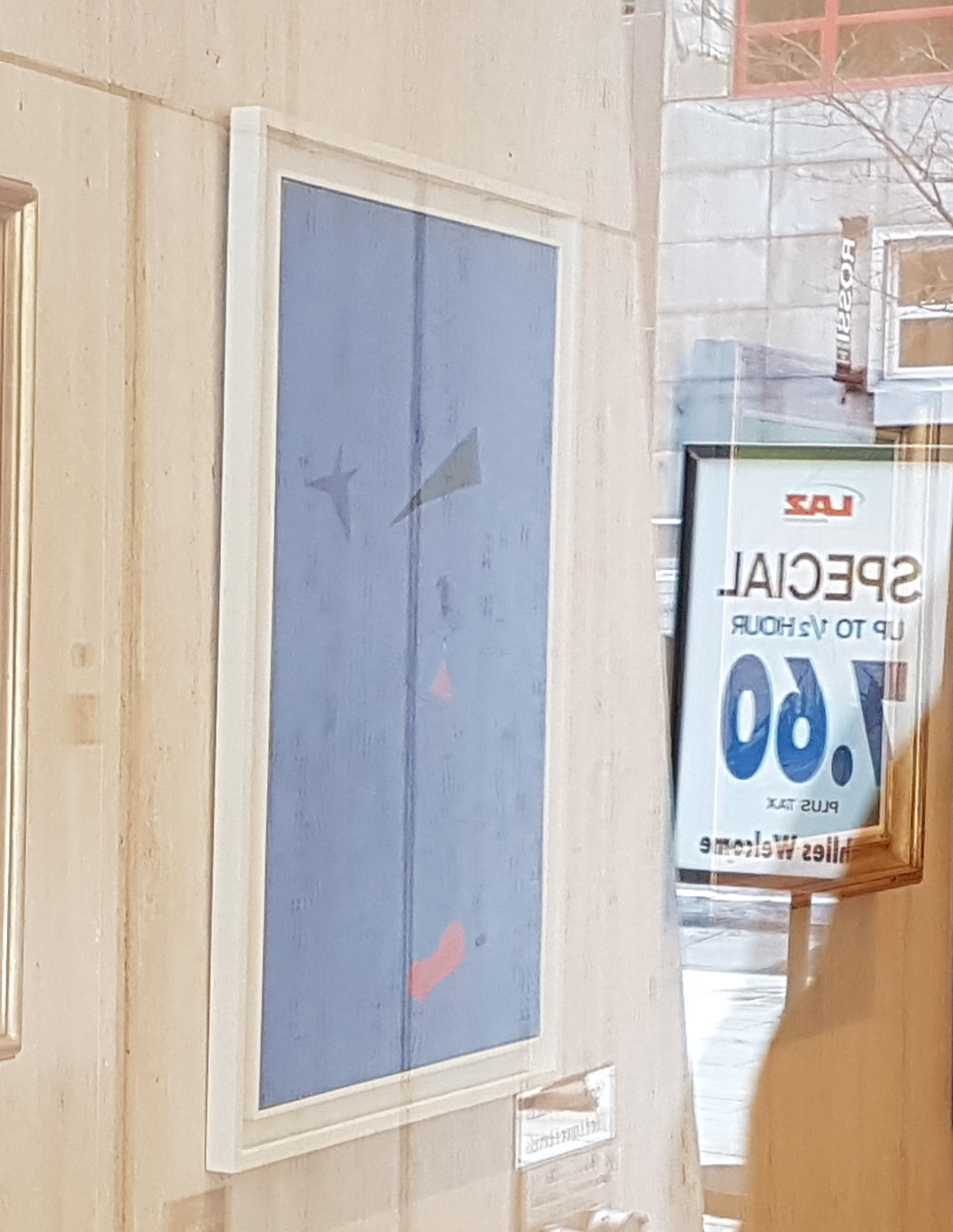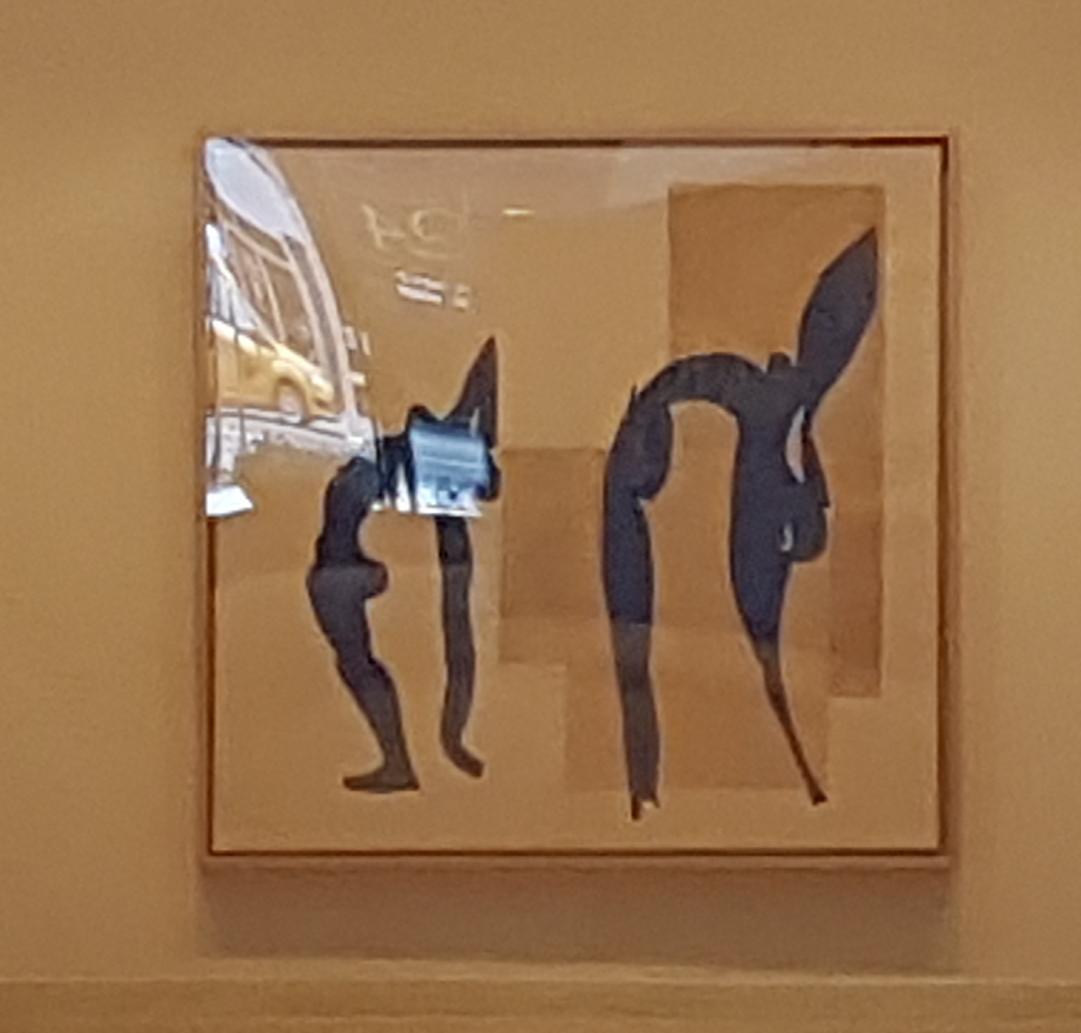
Jean Michel Basquiat, Parts (1984) – The self-taught Basquiat died at 27 but left an indelible mark in the art world. His earlier career as a graffiti artist shows in his work and his legacy that continues with the current appreciation for street art as fine art. This piece is different from much of his oeuvre as it does not feature any human figures or include a crown, which might be his best known motif. But the rawness. vivid colors, and accidental marks that are typical of his paintings are immediately evident. Online image.

Joan Miró, Peinture (1927) – In 1924, the Barcelona-born Miró joined the surrealists and his work became increasingly abstract. This piece shows several elements that would become common motifs over his long career and are consistent with the surrealist aim of accessing the subconscious. Regardless of how abstract they appear on the canvas, the forms in his paintings always represent something concrete. The lines and circles, which figure prominently in his later work, could be allusions to strings or balloons. According to Miró, the dominant color of this work, blue, was the color of his dreams. Online image.

Henri Matisse, Acrobats (1952) – Matisse had a stunningly long career that spanned painting, drawing, and sculpture. He continued to produce new work in his 80s and until his death in 1954. In his later years, while wheelchair bound, he still created art typically, through paper cut outs, which he called “drawing with scissors”. This work is one of those cutouts and builds on his lifelong study of the human form. Titled Acrobats, it is consistent with a circus theme that was central to his first book of cutouts. Online image.